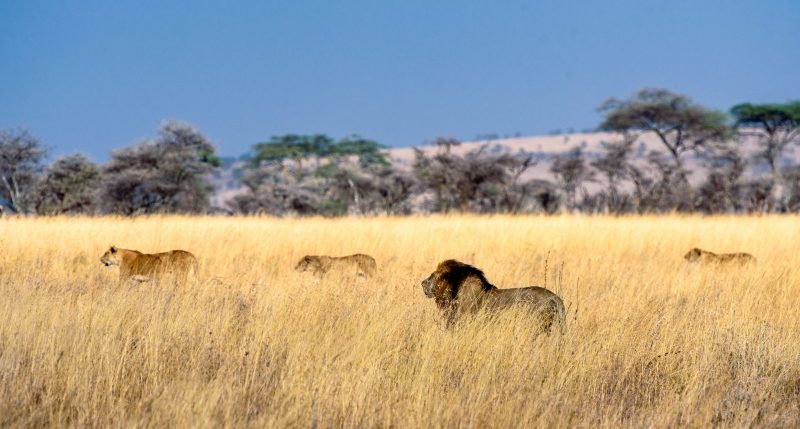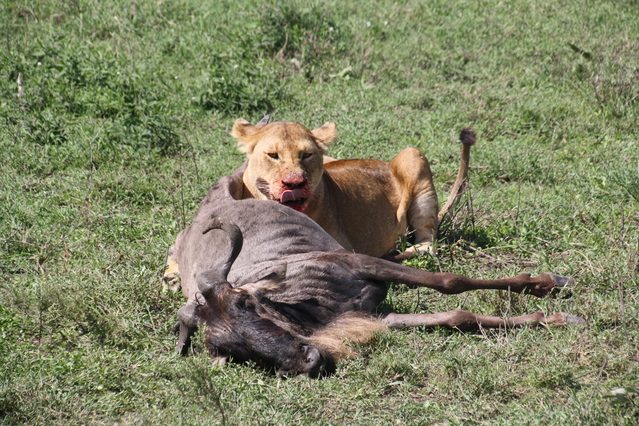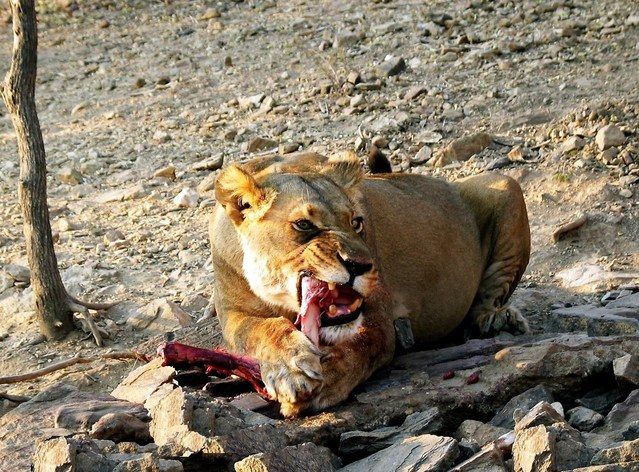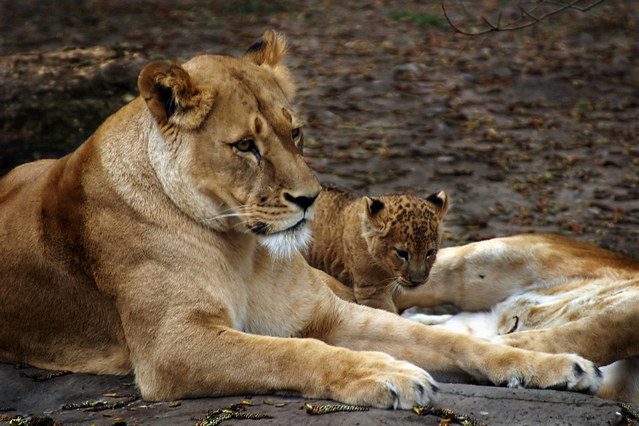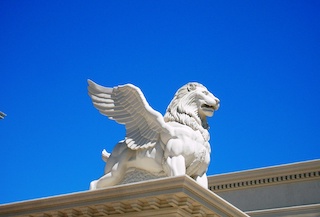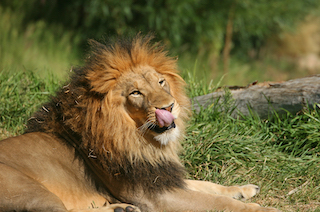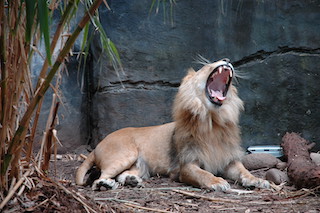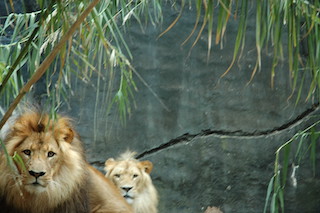Social Eating Etiquette Of Lion Pride
Most cat species live a solitary existence, but lions are exceptions. They are fundamentally social animals that tend to live in groups.
Pride of lions
A group of lions is called pride, which forms extended but close family units. The pride follows a matriarchal social system based on the division of labor and teamwork. The pride size depends on the availability of water and food. But generally, it consists of up to 20 to 30 members including one to four males, five to ten females, and their young. The size becomes smaller if resources are scarce. The lionesses make up 75% of the pride, and they usually form life-long bonds. Each pride controls a particular territory, the size of which can vary from 20 to 400 sq.km. The territorial males stay in power in the pride for not more than three years before either a challenging bachelor group takes it over or new lions chase him away. Female and male lions have different responsibilities within the pride. Their eating habits also follow a pecking order.
Variety of prey
Lions kill and eat almost all the other animals that share their habitat – both four-footed and two-footed. Lions have almost no predators because they are at the top of the food chain. Hence, these strict carnivores have a wide variety of prey but prefer to eat bigger game such as impalas, wildebeests, antelopes, buffaloes, young elephants, zebras, rhinos, hippos, crocodiles, wild hogs and giraffes.
Size of prey
The common prey is in the range of 250-pound. The bigger game means more food for the lions. So, when conditions permit, a much larger game is hunted. They particularly savor the large oryx antelope species. Lions hunt smaller prey only when nothing bigger is available and when they are hungry. Smaller prey includes mice, birds, hares, tortoises, and lizards. They also steal prey from other carnivores, like wild dogs, hyenas, leopards, or cheetahs. A healthy adult lion has nothing to fear. The loose belly skin allows it to be kicked by prey with no chance of injury.
Competition for prey
Mostly, other animals get eaten by lions and not the other way around. But other male lions who overthrow their territories and continue their genetic line can outcompete a lion. The other competitor is spotted hyenas that often share the same prey like lions, and they fight for it. This warfare goes beyond food as sometimes lions hunt hyenas, kill them and not eat their prey. Lions also dominate and promote fear in other fierce predators, such as leopards and cheetahs, so that they do not hunt the same time as lions. They swipe at the defending beasts, who refuse to become the lion’s next dinner but would rather forfeit their kill. However, at times hyenas attack, kill and eat sick and old lions. And very young cubs can be killed by leopards, hyenas and other predators especially when the mothers are not watching them.
Meals are scavenged
Lions are expert scavengers. A lot of the time the meals are scavenged. They eat almost anything found dead. For old males who are too old, scavenging may be their only way to survive.
Wide cuisine tastes
A lion’s meal starts with the entrails such as the heart, kidneys, and liver. But this feral cat’s cuisine tastes vary widely. Some lions will eat everything except the stomach. Others show a very adamant preference for the intestines. Some male lions prefer the flesh and will eat the hindquarters, which is the fleshiest part, while the females eat the entrails. The last part they touch is the head, and it is very unusual for them to open the skull.
Sharing of meal
A lion’s tongue is pink, huge and covered with fine papillae, rough enough to scrape flesh from bones or even make human skin bleed. After the hard work of successfully hunting down an animal, the lion feasts. They share the meal following a pecking order. The adult male makes the first claim. It arrives soon after the hunt and forces its way to the front, eating its fill until he is sated. When more than one male lion is at the kill, noise and aggression are the norms. Then comes the lionesses followed by the poor cubs who are often left with the scraps and leftovers after the adult lions have finished. Sometimes it results in fights.
Fast digestive system
The lion’s fast-working digestive system allows them to gorge themselves an average of 18kg in one sitting, and go for seconds shortly after. A good, full meal may result in four days of no activity, and no desire to hunt for up to five days. They will drink water every day if available, however, can go 4 to 5 days without drinking water by obtaining moisture from the food contents in the stomach.
Lounging after meal
After a sumptuous meal, the lion pride can spend the whole day digesting its food. They have few sweat glands. Hence, they wisely conserve their energy by taking it easy during the day and becoming active during the night when it is cooler. They can be seen lounging, resting, relaxing and sleeping under the shadows of the Acacia trees the entire day. When it is hot, they may rest for about 16 to 20 hours of the day.
Socialising while lounging
When lazing around, they socialize by being affectionate towards one another, During this time, they seem to enjoy good fellowship and camaraderie with lots of peaceful tactile actions such as grooming, touching, licking, head rubbing and purring. A lion possesses a highly-developed form of communication behaviors and animated movements. The rubbing heads is tantamount to shaking hands and curling their tails together while moaning quietly. As a form of social communication, they even roar in a chorus. Territorial males are the most vocal with females, but the young ones are silent.
5 Frequently Asked Questions About Eating Habits Of Lions
To receive a colourful digibook about lion with videos, images and text, please fill out the following form or simply email us on safaris@safari-center.com

